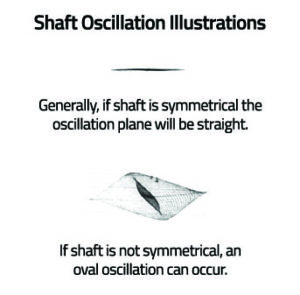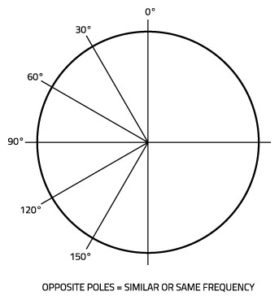The rules of golf state, “The shaft shall be straight, with the same bending and twisting properties in any direction and at any point along its length, the shaft shall: (i) bend in such a way that the deflection is the same regardless of how the shaft is rotated about its longitudinal axis; and (ii) twist the same amount in both directions.

The intent of this rule is for shafts to perform symmetrically concerning these properties, and the goal from a manufacturing standpoint should be to achieve this objective to the extent that it will make no difference how a particular club shaft is oriented in a golf club.

However, due to manufacturing tolerance, making symmetrical shafts is not always possible. The best method to measure the symmetry of a shaft is to compare the CPM variation around the shaft’s circumference. If the CPM variation is 3 cycles or less when measured in the six planes illustrated, then the shaft is considered symmetrical for playing purposes. If the CPM variation ranges from 5 to 20 cycles (like we have measured), the desired CPM value should be positioned towards the target or parallel to the face plane for consistent flex results within the set. This is the best way to neutralize non-symmetrical shafts according to the rules of golf.
